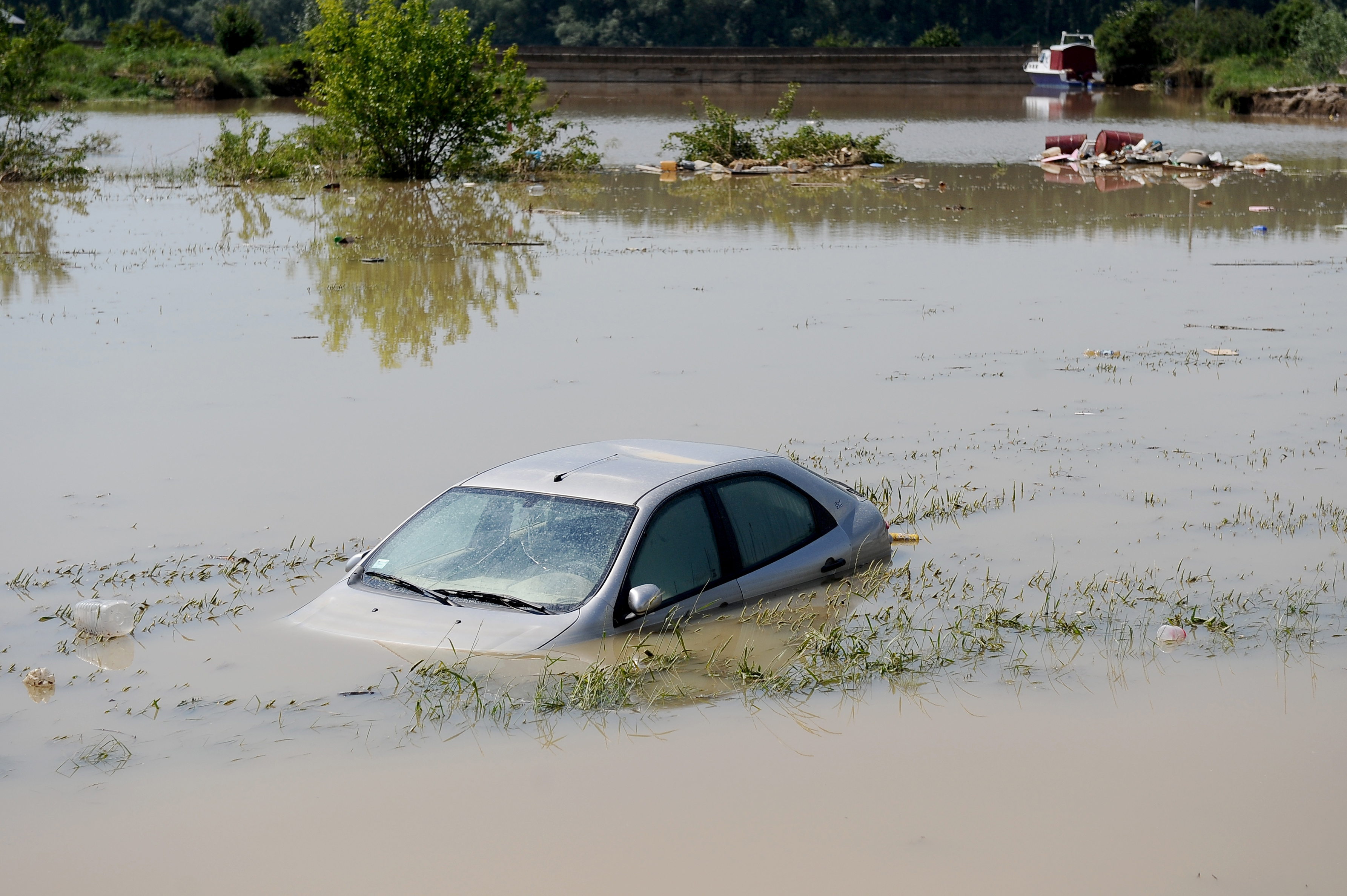TEMA Project & Extreme Weather Events: a parallel between Ahrtal & Emilia Romagna

27 May 2023
Federico Iannuli, consultant at Lisbon Council asbl
The Floods in Emilia Romagna in 2023
It all started on the night between the 1st and 2nd of May 2023, when in 48 hours, it rained more than 200 millilitres over Bologna, Forlì and Cesena, causing landslides and one death (Biondani, 2023). However, the worst was yet to come. “The Perfect Storm” hit on Emilia Romagna between the 15th and 17th of May, when heavy rain and a Stau event – clouds are forced into condensation due to the wind pushing them against mountains – mixed with strong winds that originated a coastal storm with the sea waves impeding the outflow of rivers water (Biondani, 2023; iconameteo.it, 2023). This doomsday scenario produced 21 river flooding, affecting 42 towns and villages, 15 deaths and more than 13 thousand people were evacuated (Biondani, 2023; iconameteo.it, 2023).
Along with the extreme weather conditions, the environment was already predisposed to flooding due to the soil being impervious, because of a drought, and excessive land use (Biondani, 2023; iconameteo.it, 2023). In fact, according to the Italian institute Ispra, half of the Emilia Romagna region territory is at risk of flooding: 10% of the population lives in high-level-risk areas and 60% in mid-level-risk ones. In the most damaged provinces – Ferrara, Ravenna and Forlì-Cesena – the percentage of the territory under threat is respectively 100%, 80% and 64% (Biondani, 2023). During the flood, in the area were operating more than 2000 rescuers, thanks also to the EU Civil Protection Mechanism, and after five days, the Copernicus Emergency Management Rapid Mapping Team sent the analysis of the affected areas, showing 3000 damaged buildings in the Ravenna province only (iconameteo.it, 2023; Ilsole24ore.com, 2023).
The Floods in the Ahrtal in 2021
Two years before, on the 14th and 15th of July 2021, severe floods affected the whole of Central Europe, resulting in some damages in the Netherlands, Austria and Switzerland and destroying a part of Germany and Belgium, killing more than 220 people (AFP & AP, 2022). One of the worst-hit regions was the Ahrtal (or Ahr Valley, in English), which suffered more than half the deaths (AFP & AP, 2022). The characteristics of the Central European Region make it prone to floods; in fact, there are many big rivers – such as the Danube, the Rhine, the Main and the Elbe – and, in its climate, heavy and persistent rains are common (Tema, 2023a). The same is true for the Ahr Valley, made even more vulnerable by the fact that it is situated within a low mountain range, especially in the area close to Bonn, where the Ahr River meets the Rhine (Morris, 2021; AFP & AP, 2022; Tema, 2023a). There the Ahr spread hundreds of kilometres over its banks, and the water submerged everything in its path (Morris, 2021; AFP & AP, 2022). In the five days after the disaster, many search-and-rescue missions took place, with thousands of first rescuers participating (Tema, 2023a).
The solutions brought by the TEMA Project
These are just two recent examples of natural disasters, especially floods, that are becoming more and more common in Europe and worldwide due to climate change. Global warming causes opposite extreme weather events to occur one after the other, as we see draughts and floods alternating, so we must be able to adapt and find solutions. In order to answer this need, experts from 20 different organisations are working together on the TEMA (Trusted Extremely Precise Mapping and Prediction for Emergency Management) Project within the European Union Research and Innovation Programme Horizon Europe (Tema, 2023b).
Their research aims to find “methods for exploiting data and knowledge for extremely precise outcomes (analysis, prediction, decision support), reducing complexity and presenting insights in an understandable way” (Tema, 2023b). Therefore, TEMA will provide a modern Natural Disaster Management (NDM) system to help stakeholders like Civil Protection Agencies and First Responders increase their situational awareness and define recommendations and guidelines to adopt when dealing with a complex emergency (Tema, 2023b).
The final goal is to create a tool – an NDM platform – that will use AI to improve and accelerate the analysis of extreme data - massive amounts of data that must be queried, communicated and analysed in near real-time by using a very large number of memory/storage elements (Cordis, 2018). In this way, the NDM platform is able to provide accurate emergency phenomenon modelling, evolution predictions, simulation, and interactive visualisation. Furthermore, the tool will offer precise semantic 3D area mapping and interactive, intuitive and accessible visualisation enabled by advanced augmented reality. Therefore, through AI analysis of a vast amount of data from all over the internet, the platform will create a real-time 3D map of the affected area – faster than the current Copernicus Project – and an AR platform to help rescuers to orient and understand better (Tema, 2023b).
To apply the theory to the two cases described above, TEMA will be used in flooding events for various purposes: first of all, with all the data retrieved from the internet – like the Ispra data or information from past floods – the platform can warn authorities, population and PPDRs predicting the phenomenon evolutions; then, it can provide information regarding the scale of the event, the size of the affected area, the number of the affected people and the accessibility to settlements (roads, bridges, etc.) (Tema, 2023a). So this will help First Responders that often intervene lacking sufficient knowledge about the zone of operations.
Thus, in a world where extreme weather events causing natural disasters are increasing due to climate change, projects like TEMA can help authorities and Civil Protection Corps prevent severe damage to buildings and people and save lives by providing a prompter response.
References
- Agence France Presse (AFP) & Associated Press (AP). (2022). “After the floods: Germany’s Ahr Valley then and now – in pictures”. The Guardian. Retrieved from: https://www.theguardian.com/world/2022/jul/13/floods-then-and-now-photographs-germany-ahr-valley-flooding-disaster-july-2021
- Biondani, P. (2023). “Alluvione Emilia-Romagna, l’allarme Inascoltato degli Esperti: «Metà Regione è a Rischio.»” L'Espresso. Retrieved from: https://espresso.repubblica.it/attualita/2023/05/19/news/alluvione_emiliaromagna_rischio-400793060/
- Cordis. (2018). “ASPIDE: exAScale ProgramIng models for extreme Data procEssing”. European Commission. Retrieved from: https://cordis.europa.eu/project/id/801091/it
- Iconameteo.it. (2023). “Doppia alluvione in Emilia Romagna: Da inizio Maggio Caduta La Pioggia di 6 mesi. le cause Del Disastro”. Icona Meteo. Retrieved from: https://www.iconameteo.it/news/notizie-italia/doppia-alluvione-in-emilia-romagna-da-inizio-maggio-caduta-la-pioggia-di-6-mesi-le-cause-del-disastro/
- Ilsole24ore.com. (2023). “Oltre 3.000 edifici colpiti nell’area di Ravenna”. Il Sole 24 Ore. Retrieved from: https://www.ilsole24ore.com/art/alluvione-emilia-romagna-e-ancora-allerta-rossa-musumeci-troppi-vincoli-i-fondi-AEn3mVWD?refresh_ce=1
- Morris, L. (2021). “«We have nothing»: Grief, shock and resilience along the flood-ravaged banks of a German river”. The Washington Post. Retrieved from: https://www.washingtonpost.com/world/europe/germany-floods-scene-destruction/2021/07/16/3129dd1c-e5a1-11eb-88c5-4fd6382c47cb_story.html
- Tema. (2023a). “Central-European regional floods (Germany)”. Retrieved from: https://tema-project.eu/pilots/central-european-regional-floods-germany
- Tema. (2023b). “The Project in a Nutshell”. Retrieved from: https://tema-project.eu

